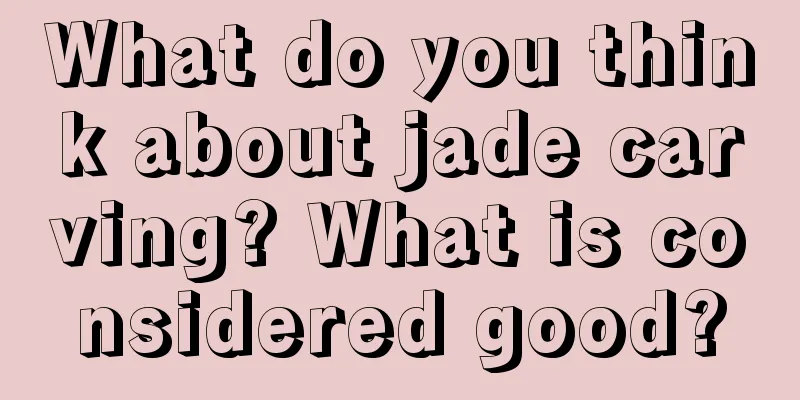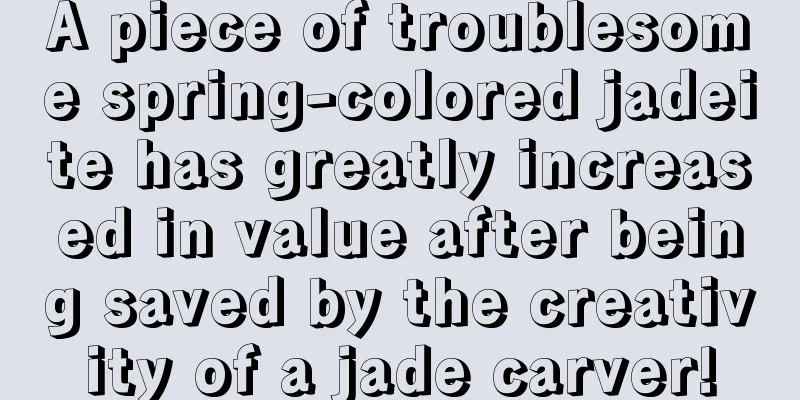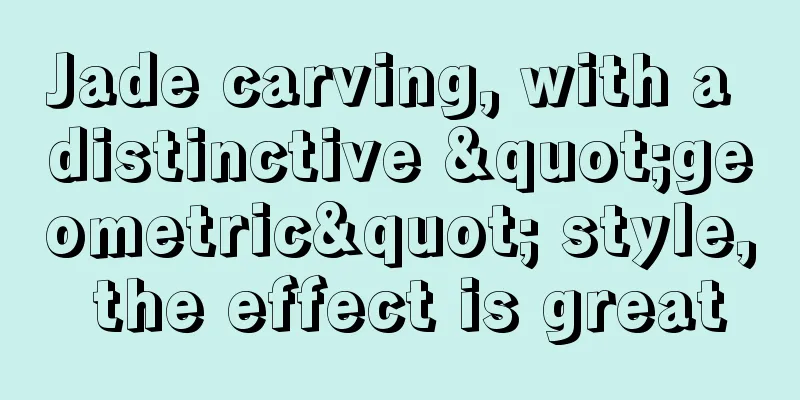What do you think about jade carving? What is considered good?

|
Jade is judged by its "type, water, color, texture, and workmanship". Among them, "type, water, color, texture" refers to the quality of the jade itself, and is also the most talked about. While workmanship refers to the craftsmanship of jade. The quality of workmanship determines whether a piece of jade will be wasted or icing on the cake, or even turn decay into something magical. It can be seen that craftsmanship is very important for a finished jade product, especially China's jade carving technology, which has a long history, exquisite craftsmanship, and diverse styles. In the jewelry industry, it is known as the "Wonder of Oriental Art". Jade, as one of the inheritors of Chinese jade culture, is also an important carrier of these precious carving techniques. So the question is, how should we view jade carving? What is considered good? Here I would like to share with you some of the most common jade carving techniques. 0 1. Round Sculpture A round sculpture, also known as a three-dimensional sculpture, refers to a non-compressed three-dimensional sculpture that can be appreciated from multiple directions and angles. Since round sculptures are extremely three-dimensional , they require the sculptor to carve from all directions, including front, back, left, right, top, middle and bottom, which is a great test of the jade carver's skill level. The content of the round sculpture can be people, animals or still life, usually playthings and ornaments. 0 2. Relief Relief refers to the process of shaping or carving an image on a carved flat base by compressing the thickness while maintaining the original length-to-width ratio. The shape outline is similar to that of a painting, with varying degrees of concavity and convexity and no restrictions on form. Relief works are mainly appreciated from the front. Depending on the degree of compression, relief can be further divided into shallow relief, medium relief and deep relief. Each of the three has its own characteristics and is very colorful. The bas-relief of jade is to remove a layer of equal depth from the blank space outside the designed image outline, so that the image can be slightly raised and show slight ups and downs. The middle relief of jadeite adopts another form of carving. It mainly makes the outline by subtractive method, but the protrusion of the carved object is higher and the distance between its highest point and the ground is larger. Therefore, medium relief is also the most widely used carving method. The thickness of jadeite's deep relief is the same as or slightly thinner than that of a round sculpture, and the carved object shows stronger ups and downs. If it were not for its connection to the background from behind, the high relief could almost be treated as a sculpture in the round. 0 3. Openwork Openwork carving, also known as hollow carving, is a further development of relief carving. On the basis of relief carving, the background part is hollowed out to make the outline of the carved image clearer, reflecting the delicate and exquisite artistic effect. Openwork carving adds layers to jade carvings, with patterns and scenery interlaced up and down, and scenery at different distances. However, the craftsmanship is complex, the production is difficult, time-consuming and labor-intensive, but the artistic effect is the best. 0 4. Pretty Color Color matching refers to utilizing the natural color and texture of jade and applying carvings that are suitable for the jade material. As a special form of jade carving, Qiao Se can make the shape and dark color of the work harmoniously unified, making the work more vivid and lifelike, giving people a lifelike and vivid feeling, and is deeply loved by people all over the world. 0 5. Turn flaws into virtues Jade is created by nature and inevitably has more or less flaws, so there is a saying in the industry that "jade cannot be considered jade without flaws." Flaws are taboo in jade, but in order to make full use of the jade material, there are techniques to “turn flaws into virtues”, and avoiding carving is one of them. The works created through this technique not only do not affect the quality of the works, but also make them more vivid and achieve artistic effects that cannot be achieved by ordinary carving methods. 0 6. Turning waste into treasure The purpose of clever use of waste materials is to cherish jade resources, reduce the cost of works, and use scraps to create jade carvings with the same or higher value than finished jade materials. Jade is a precious and non-renewable material, so every jade carver adheres to the principle of cherishing materials. In this regard, the technique of cleverly using waste materials is even more valuable.
|
<<: The elegant and concise jade design is a dialogue with the soul of jade.
>>: What does it mean to “open the face” of jade?
Recommend
How to choose jade pendants
Choosing a jade pendant is the same as choosing o...
Is it better for jade to be more transparent or greener?
As the representative of jadeite, jade has a high...
The basic processing steps of jade from raw material to finished product
Everyone knows that any jade craft jewelry is not...
What is the value of gray jade?
In the fashion world, gray is definitely a fashio...
What does jade worth 15 million look like?
A piece of jade weighing 55g is worth 15 million!...
The intaglio art on jade carvings, a kind of implicit and restrained beauty
If jade is not carved, it cannot become a useful ...
What color jade ring is best?
The "green" color of jadeite has the hi...
Why is jade, a luxury item, always loved by people?
Luxury goods, as a label, represent identity, sta...
As long as you meet the right jade carver, jade bricks can also be carved into a unique charm
In our impression, the best jade works are made o...
If you love jade, how can you not understand its colorful beauty!
The beauty of jadeite lies in its warmth and soft...
Like a landscape painting, the black-chicken jade is beautiful in a unique way, but many people mistake it for black jade.
When talking about black jade, everyone will thin...
Jade "uniformity" is an important aspect of judging the quality of jade in addition to its type, water content, and color.
Jade, as a fashionable jewelry with oriental char...
Decoding the entire process of jade carving
Every piece of jade has its name. Because every p...
Everything is engraved series
The cicada lives on high branches and drinks but ...
Jade carving, fun is the driving force of creation
Jade has a long history. Over the long years, our...









